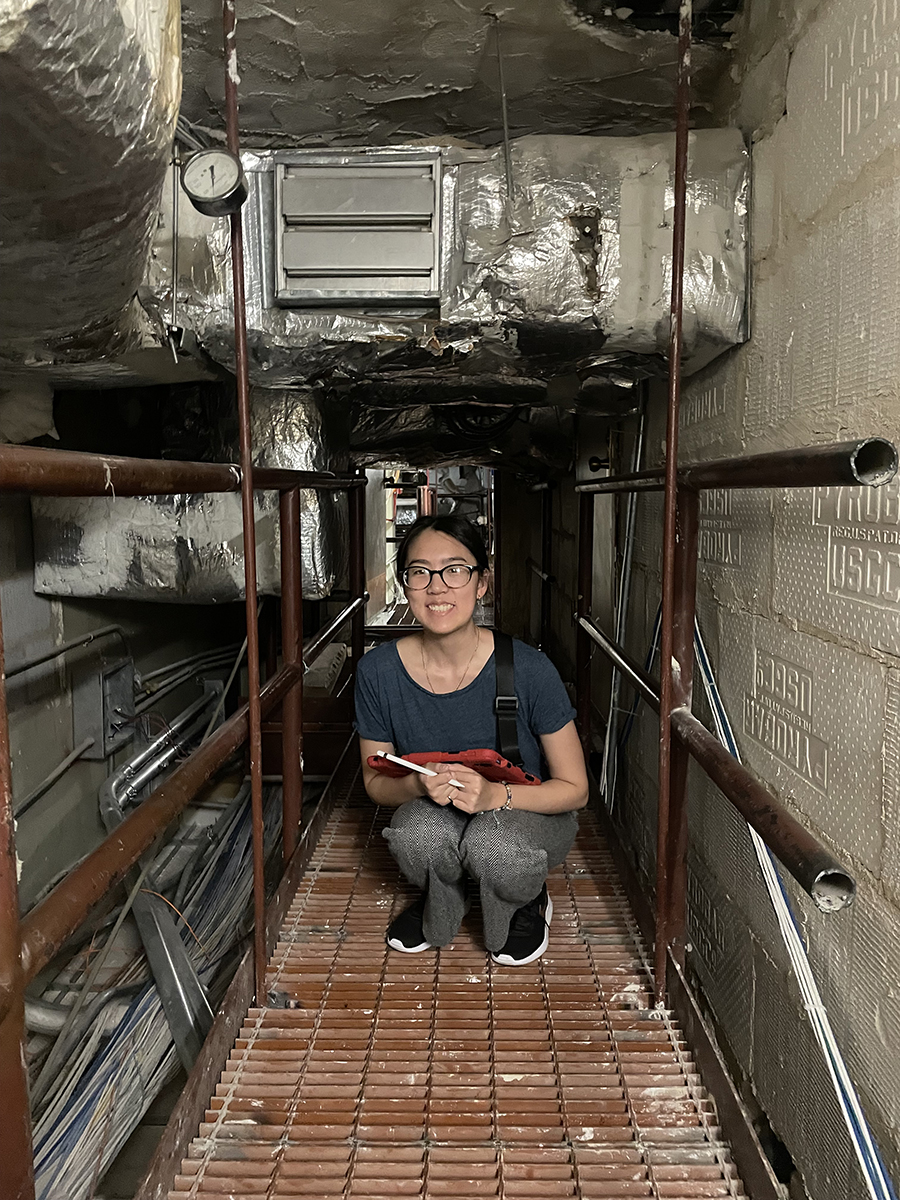My Experience as a Summer Intern: Hidden History

The Lewis F. Powell, Jr. U.S. Courthouse in Richmond, VA, was my first field survey during my internship at Summer Consultants. The task felt a bit daunting. My only prior experience with surveying was looking at a mechanical room in a parking lot about 3 blocks down the street from where I worked. Adding to this was how broad the agenda for the site visit was. The plan was the survey all 6 floors of the building for plumbing leaks. Ironically, we found more leaks from their mechanical piping.
The courthouse was an interesting building to survey at, as are all historical buildings. Hidden away in the mezzanines were the old moldings of the ceiling. In one mechanical room, there were several sets of drawings. These drawings ranged from as early as the 1920s until the 2000s. It was fun to see which symbols are still used today and different handwritten plans.
The building also contained a time capsule of MEP equipment. In the main mechanical room, tucked in the corner away from the modern equipment was an old coal powered boiler. And while some air handling units (AHUs) had been replaced recently, there were plenty that weren’t. Many AHUs were belt-driven and had pneumatic controls still. These AHUs were easily over 40 years old and had far outlasted their predicted life cycle. Even with all these advancements, some survey methods still can’t be replaced though. For instance, it is particularly difficult to tell which way air is flowing in a vent. The easiest way is to simply use a piece of paper to see if it’s supply or return.
The site visit was a very helpful experience. It’s always useful to be able to compare drawings to the real thing. Pipes and ductwork are often not labeled as clean, and valves can look very different from their symbols. You also don’t quite realize the elevation of the plenum space until you’re climbing up on a ladder to see the piping hidden by ceiling tiles. It’s always important to be able to connect what you’re drafting and viewing in CAD to the actual space, and you never know what you might find.

Comments